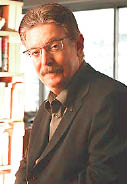Embracing Accountability
Eric Nadelstern has been a major force in shaping New York City's entrepreneurial approach to school leadership
The good news, says Eric Nadelstern, ’73, is that New York City’s high school graduation rate is now 63 percent—up from 50 percent five years ago, where it stood for decades.
The bad news: nearly four in 10 city teens still fall short. Most are male students of color who grow up in poverty.
“That begins to frame the enormity of the problem,” says Nadelstern, the city’s Chief Schools Officer, who attended a Bronx public school, City College, NYU and TC, and has spent his entire career in the city school system. “So our hard work lies ahead of us.”
It would be easy, in defending the graduation rate, to point to the constant influx of new immigrants during New York City Schools Chancellor Joel Klein’s tenure, many with little formal schooling. Nadelstern, who earned his TC degree in TESOL (the Teaching of English to Speakers of Other Languages) and later founded and led New York City’s International High School (IHS), bristles when offered that out.
“Educators for far too long have been blaming poverty and race,” he says. “You can go to schools with poor kids who are African American and Latino, from families under tremendous pressure, and they are succeeding at very high levels. And yes, at other schools kids from the same backgrounds aren’t doing well. It’s the variables we control that can make the difference, and we have to accept the accountability.”
Accountability has been the watchword of the Klein era, and Nadelstern has been a major part of translating it into practice.
“We’ve adopted a portfolio management model that focuses on outcomes and lets people do great work—and where we replace the low-performing leaders,” he says.
The approach has spawned a proliferation of smaller, themed schools, many proposed by their founding principals. Nadelstern helped lead that effort, serving as a deputy superintendent in the Bronx overseeing the creation of small schools. He subsequently led the city’s “empowerment network”of high-performing, autonomous schools.
“The idea is, there’s a myriad of ways for people to learn, and the central office should support and not dictate,” he says.
Nadelstern describes himself as a “dyed-in-the-wool constructivist” who believes “you can’t really teach anyone anything, you can only help them by creating conditions that are conducive to learning.” But in his present position, he says, “I work overtime not to impose that philosophy on others. Because I’ve learned that what I believe is a lot less important than how principals and teachers believe students can learn best. If they are free to follow their beliefs, they will work more passionately and get better results. So I’ve become a bit of an agnostic, and mostly what I believe in is empowering others.”
Nadelstern has also helped shape programs for the city’s students who speak English as a second language, a group whose graduation rate has climbed by 14 percent during the past two years. Nadelstern’s first job was teaching speech to immigrant students at his alma mater, DeWitt Clinton High School. That prompted him to enroll at TC, where he studied with John Fanselow, one of the early TESOL pioneers. He later managed bilingual ESL programs in city high schools, and his approach there and at IHS has been widely emulated. (There are now 10 schools in New York City modeled on the original IHS, and two others in California.)
“The assumption used to be that in America, immigrant assimilation takes generations,” Nadelstern says. “The first group works hard and their kids graduate from high school. Their grandkids go to public universities and their great grandkids go to Harvard, Princeton, Yale, Columbia. But these days, the expectation is that will happen in four years rather than four generations. We should embrace that—we’ve got schools and teachers demonstrating it’s possible, daily. Now we need to do it as a system."
Published Wednesday, May. 19, 2010
